DAV builds the foundations of our future!

Drones, cars, trucks, and even shipping boats are only some of the autonomous vehicles that will soon enter the mainstream. For an efficient, fast-scaling shift from the existing transportation sector into the autonomous vehicle transportation sector, a huge support network must be put in place. This autonomous vehicle network must include a large number of AVs, spread out all over the target area. Many parking spots must be designated for all of these AVs to park when they are not flying or driving around. Charging stations must be placed over a large geographical area. And finally, a network of supporting services, such as repairs, rescue, cleaning, and more must be put in place.
The DAV technology stack was created to make this ecosystem a reality by enabling true cooperation between autonomous vehicles, service providers, and users.
The transportation future will need legions of software developers, hardware makers, and third-party providers actively contributing to a web of self-driving and self-flying vehicles. It will require open transactions between vehicles, providers, and users — just as Internet protocols to transmit, route, and receive data between computers was needed to produce today’s panoply of web offerings.
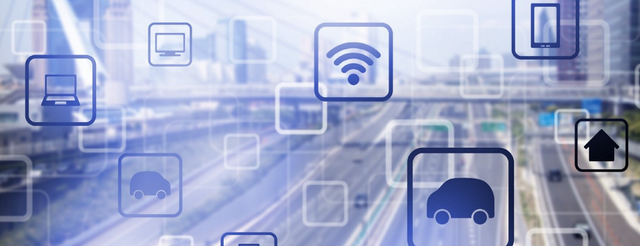
Today, large corporations have already begun experimenting with fleets of autonomous vehicles: Domino’s pizza delivery robots, Amazon’s Prime Air drones, Waymo’s autonomous taxis, and Baidu’s open-source self-driving cars are all leading the way towards fully autonomous transportation systems. As these organizations employ armies of software developers in their attempts to create the first fully autonomous vehicles, they need to resolve issues revolving around perception, localization, decision making, and more. Additionally, autonomous vehicles require charging, maintenance, and docking infrastructure. Centralization and narrow economic interests restrict the pace at which transformative technologies can be released and adopted by the market, as the key players are focused on dominating their own isolated networks, and not on creating a collaborative infrastructure that is more efficient and has higher potential for more diverse use cases in the long run. A lack of incentives to collaborate across various value chains stifles the pace of progress in thesector. An open source platform that is inclusive and permissionless provides economic incentives for multiple participants to join the network and enjoy its future growth in a way that allows for much more rapid scaling.
Solution
By open-sourcing the DAV technology stack and decentralizing protocols around identity, discovery, mission flow, and payments, provided through a modular UI, DAV enables cooperation. New players can enter the market, creating distributed value and growing participation in the transportation economy. A decentralized open source network >means that players can independently take action in response to unfilled or poorly filled market needs.
What’s efficient about open-sourcing network technology is that it pushes innovation to the edge, giving more participants control over the pace and direction of innovation, and fueling creativity. Simplicity at the center allows for complexity at the edge. Innovative applications and services will emerge as autonomous vehicle services scale and evolve, just as the Internet brought new businesses and business models into existence.
DAV’s open-source technology stack, protocols, and UI solve problems through enabling cooperation, positioning the DAV network as a platform for independent innovation at the edge.The purpose of the DAV cryptocurrency is to incentivize a community-built autonomous vehicle infrastructure and build an autonomous vehicle platform that is commercially viable and essential for cooperation. The DAV network enables the distribution of tokens across all groups of network participants, and the growth of the network benefits all network members.
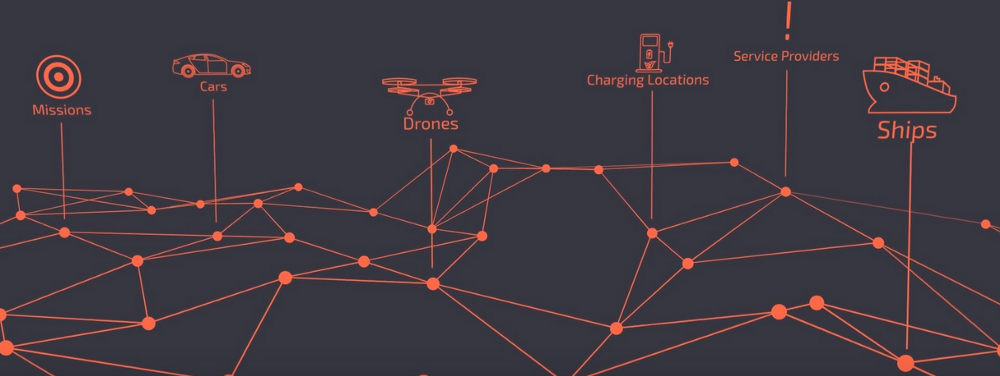
Allowing autonomous vehicles and services to discover each other and communicate with each other are only the first steps in creating an autonomous ecosystem. To enable a successful exchange of services between two or more parties, DAV offers a communication protocol designed to ease each step of the mission flow — from the initial statement of need through bidding, service fulfillment, and eventually payment. These steps are executed off-blockchain using peer-to-peer communication and are governed and enforced by a number of smart contracts on the blockchain.
The story of each mission begins with a DAV Identity (a buyer) that requires a service broadcasting a request for that service. At its core, that buyer is defining a need. This Need is then broadcast to all DAV entities that are able to provide that service. As a example, let’s take a person looking to ship a package to a friend who lives in the city. That user broadcasts a Need to deliver a package of a certain size from coordinate α to coordinate β at a certain time. In turn, a drone looking to deliver that package might broadcast its own Needs, such as a charging station within 500 m of coordinate β and a robot able to do the “last mile” of the delivery from a rooftop landing station to the second floor of the building at coordinate β. The message containing the Need includes a number of fields, which are mandatory to all Need messages, as well as a payload with additional details specific to the type of service requested (e.g., package weight, number of passengers, etc.)
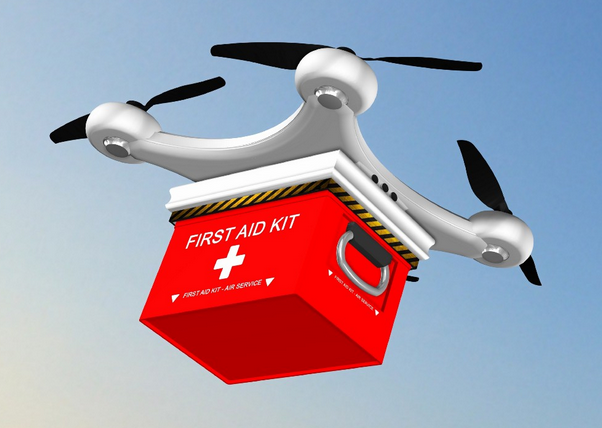
The second part of the mission flow is the Bidding process. Any Identity (a seller in this case) listening to incoming Needs can respond with a Bid to fulfill that Need. The Bid is sent directly to the buyer and, like the Need, includes a few mandatory fields common to all Bids, as well as a payload containing additional details relating to the specific type of service. For example, a drone responding to a request for a ride might include the price for completing the mission, an expiration time for the Bid, the drone’s current location, estimated time of pickup, estimated time of delivery, and additional details like whether it requires a third-party arbitrator to sign the contract.
Note that the entire flow is asynchronous. The drone from the previous example might receive the Need and, before sending its Bid, broadcast its own Need asking for Bids from insurers to insure the delivery. Once the drone receives a Bid from insurers, it can calculate the total cost of the delivery and make its Bid for the delivery job. Only once it is awarded the delivery job will it sign the insurance contract. Note that in this example, the drone is both a buyer and a seller of services.
FUELING A NEW ECOSYSTEM
DAV is committed to the the success of its platform, its token, and to the success of the economy and its participants who are building and deploying the next generation of autonomous vehicle transportation and infrastructure.
To help grow the Internet of Transportation and jumpstart the network effect, the foundation will actively incentivize early adopters in select cities, establishing favorable market conditions and lowering barriers to entry. DAV cities will be designated by the foundation based on the following criteria:
●Autonomous-vehicle-friendly regulation
●Financial incentives from local EDOs (i.e., economic development offices)
●Viable use cases and populations of early adopters
●Deployment of UTM(Unmanned Aircraft System (UAS) Traffic Management (UTM) https://utm.arc.nasa.gov/index.shtml.) for integrated airspace management through e-registration, e-identification, flight planning, geofencing, airspace authorization, flight tracking, and live telemetry services
DAV tokens will be distributed as part of a DAV incentives program, which will provide bounties directly to consumers and enthusiasts in DAV cities, to autonomous transportation services, and/or to autonomous vehicle companies for purchasing services from within the transport economy, such as charging or maintenance.
By deploying a predefined portion of its capital this way, the foundation aims to seed sustainable transport economies of participants and help jumpstart city-wide network effects. However, while doing so, the following potential pitfalls will be addressed:
Origin of Incentive Tokens
When approaching the challenge of deploying large amounts of DAV tokens, using the foundation’s DAV reserves would be unfair towards token holders, as the receivers of those tokens are expected to liquidate many of these tokens to cover operational expenses involved with providing the services purchased. That would mean that, by design, an influx of “free” tokens would be poured into the market, potentially to be sold at large quantities. As a balancing factor, the DAV Foundation will only fund the DAV Incentives program using DAV tokens that it has purchased on the markets at market price, using the foundation’s ETH reserves that were allocated specifically for this purpose.
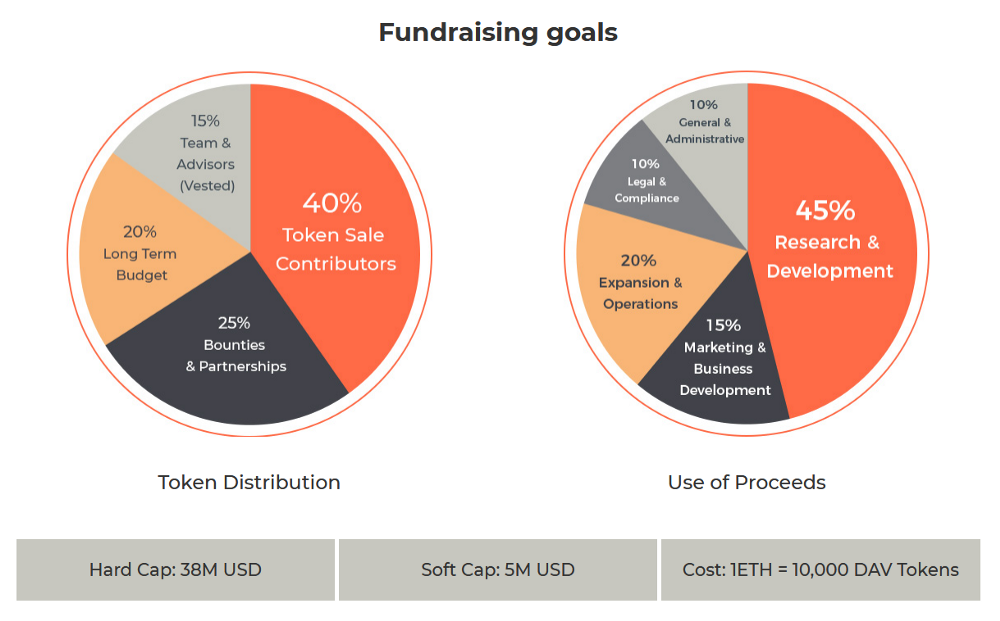
Destination of Incentive Tokens
Another issue to be resolved is avoiding the recipients of incentives tokens to sell them on the market instead of using them to buy services from DAV ecosystem providers. To help make sure that incentives tokens are properly utilized, they are embedded with a list of allowed Identities before being distributed. So, in each DAV city where incentives are to be distributed to help jumpstart the market, relevant provider Identities will be updated, and incentives tokens will only be transferred to these addresses.
While the limitations on incentives do require a temporary period of centralized growth management, this does not have an impact on the long-term architecture of DAV as a completely decentralized platform.
FUTURE WORK/ROADMAP
The core team behind DAV will work with the community to continuously document, publish, and open source proof-of-concept releases, in which each iteration will be more daring than the previous in terms of adding new autonomous vehicles and participants, as well as smarter functionalities, across longer distances and in more countries.
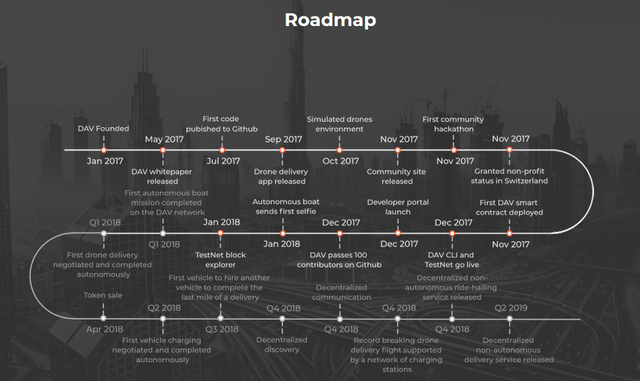
DAV’s team
consists of successful entreprenuers, innovators, blockchain experts, and autonomous vehicle specialists. You can learn more about
Team section. https://dav.network/#dav-team
CONCLUSION
At the critical convergence of autonomous transportation technology and blockchain technology, DAV’s open-source decentralized identity, discovery, mission coordination, and payments enable users, service providers, maintenance providers, third-party developers, and investors to become part of a new economy and monetize the transportation system of tomorrow.
Change is coming, and the opportunities are numerous. Just as the Internet enables P2P transfer of information, and as blockchain enables P2P transfer of value, the DAV network enables P2P transfer of physical objects.
And more information you can find on these links:
Website: https://dav.network/
Whitepapper: https://dav.network/whitepaper.pdf
Twitter: https://twitter.com/DavNetwork
Hello @altmoses, upv0t3
This is a free service for new steemit users, to support them and motivate them to continue generating valuable content for the community.
<3 This is a heart, or an ice cream, you choose.
:)
R4ND0M:
4379 2573 5610 7886
1690 5581 8755 4287
9630 1409 5315 6185
3121 2950 8985 9161
Congratulations @altmoses! You received a personal award!
Click here to view your Board of Honor
Congratulations @altmoses! You received a personal award!
You can view your badges on your Steem Board and compare to others on the Steem Ranking
Vote for @Steemitboard as a witness to get one more award and increased upvotes!